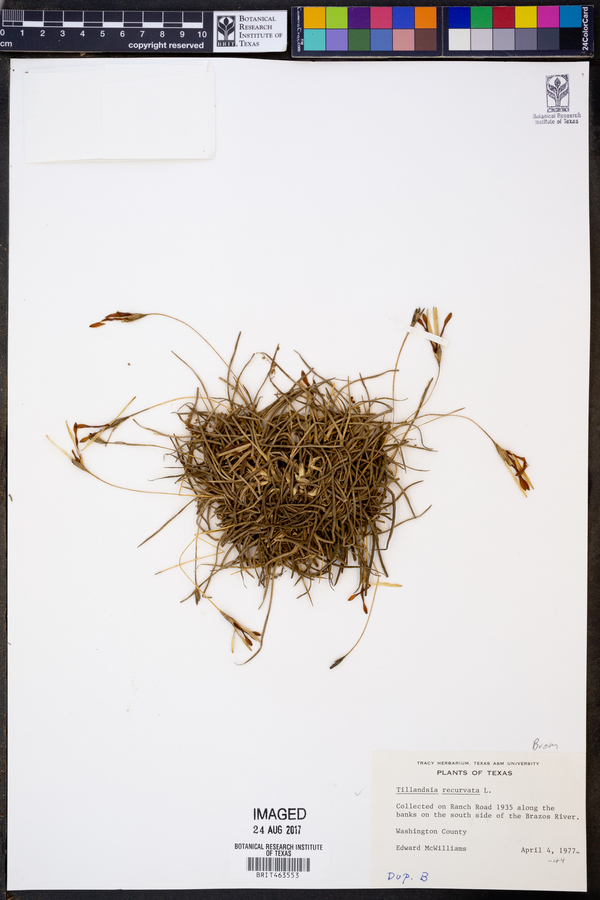Bromeliaceae
|
Bromeliaceae |
|
|
Herbs, perennial, terrestrial, among or on rocks, or epiphytic. Roots usually present, often poorly developed in epiphytic taxa. Stems very short to very elongate. Leaves usually spirally arranged, forming water-impounding rosette, occasionally lax and / or 2-ranked, simple, margins serrate or entire, trichomes nearly always covering surface, peltate, water-absorbing. Inflorescences terminal or lateral, sessile to scapose, simple or compound; bracts usually present, conspicuous. Flowers bisexual or functionally unisexual, radially symmetric to slightly bilaterally symmetric; perianth in 2 distinct sets of 3; stamens in 2 series of 3; ovary inferior or superior; placentation axile. Fruits capsules or berries. Seeds plumose, winged, or unappendaged. Bromeliaceae contain three subfamilies: Bromelioideae, Pitcairnioideae, and Tillandsioideae. Generic circumscriptions are problematic, especially in parts of the Bromelioideae and Tillandsioideae. Pineapple, Ananas comosus (Linnaeus) Merrill, the only agriculturally important member of the family, is in worldwide cultivation in tropical climates. Horticultural interest in bromeliads is widespread among the public; the Bromeliad Society, Inc. caters to that interest.
PLANT: perennial, herbaceous, and terrestrial, epipetric, or epiphytic. ROOTS: usually present, poorly developed and serving more as holdfasts in epiphytic species. STEMS: short and compressed to very elongate. LEAVES: spirally arranged or distichous, simple and with a dilated sheath, usually covered with peltate, waterholding trichomes; margins entire to serrate (sometimes spinose). INFLORESCENCE: spicate, racemose, or paniculate; bracts usually present and conspicuous. FLOWERS: perfect or with staminate and pistillate flowers on different plants, symmetry radial to bilateral; perianth of 6 parts, often in 2 distinct sets of 3; stamens 6, in 2 series of 3; ovary inferior or superior; placentae axile. FRUITS: capsules or berries. SEEDS: naked, winged, or plumose. NOTES: ca. 60 genera, ca. 2600 spp. Tropical and subtropical areas in the New World, with one genus represented in w Afr. The pineapple, Ananas comosus (L.) Merrill, is in cultivation worldwide in tropical areas. REFERENCES: Gutierrez, Raul, Jr. 2007. Vascular Plants of Arizona: Bromeliaceae. CANOTIA 3 (2): 23-25 |
|
